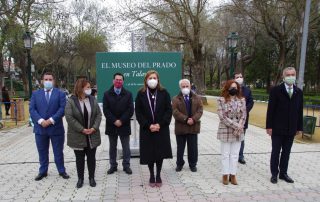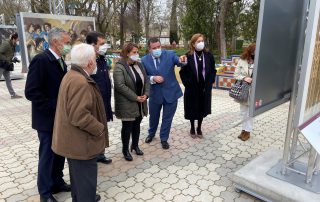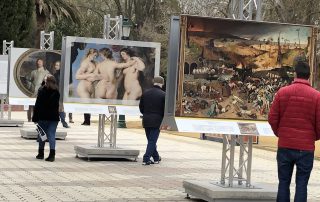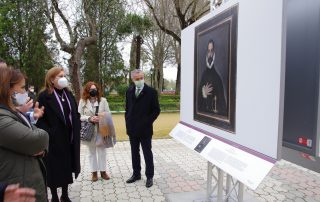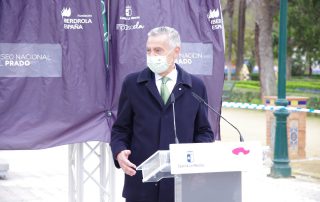Organized by the Museo Nacional del Prado and Fundación Iberdrola España, with the collaboration of the Junta de Castilla-La Mancha, the exhibition has toured seven cities in the region.
It will bring 50 of the most important works from the Museum’s Permanent Collection to the public of Talavera through life-size photographic reproductions.
The Fundación Iberdrola España has moved to Talavera de la Reina the exhibition “El Prado en las Calles”, which can be visited between March 1 and 28 in the Prado Gardens. The exhibition concludes an exhibition cycle that has visited seven cities in the region.
The Museo Nacional del Prado and Fundación Iberdrola España, with the collaboration of the Junta de Castilla-La Mancha, have developed this project with the aim of raising awareness of the collections and historical heritage of the Prado Museum through various educational programs and cultural outreach activities.
The exhibition virtually recreates the experience of visiting the museum by allowing visitors to contemplate the paintings in their real dimensions, living an experience similar to that of standing in front of a real work of art. It will bring 50 of the most relevant works of the Museum’s Permanent Collection to the public of Talavera through life-size photographic reproductions located in the Prado Gardens, one of the most emblematic areas of the city.
The exhibition was inaugurated this morning by Tita García, Mayoress of Talavera de la Reina; Ana Moreno, General Education Coordinator of the Prado Museum; Fernando García, President of Fundación Iberdrola España; and Rosa Ana Rodríguez Pérez, Minister of Education, Culture and Sports of the Regional Government of Castilla-La Mancha;
A journey through the history of Western art
This open-air exhibition curated by Fernando Pérez Suescun, Head of Didactic Contents of the Prado Museum, will allow visitors to tour the different schools that make up the permanent collection of El Prado and learn about the history of Spain, Europe and Western art through the great masters of painting. The Spanish, Italian, Flemish, French, German and Dutch schools will be present through their protagonists from the twelfth century to the early twentieth century.
The exhibition also has posters and bilingual information panels for each of the works that provide information about the history of the Museum and its collections.
The reproductions are shown on a scale of 1:1, so that, due to the dimensions of the exhibition supports, some of the large paintings can only be seen in detail, which can be seen in their entirety on the explanatory poster.
After the success of the exhibition during the celebration of the Bicentennial of the Museum, “El Prado en las Calles”, began its tour of the geography of Castilla-La Mancha on July 13 in Sigüenza. Since then, it has stopped in Puertollano, Tomelloso, Ciudad Real, Toledo, Guadalajara and, finally, Talavera de la Reina, which will be the last stop of this exhibition cycle in Castilla – La Mancha. Due to COVID19 restrictions, it has not been possible to move the exhibition to the city of Cuenca as initially planned.
In practically one year, thousands of visitors have been able to admire some of the wonders that the Museum treasures in faithful reproductions, reinforcing culture through daily visits and always in accordance with the anti-COVID19 safety regulations in force.
Fundación Iberdrola España, a Protector member of the Prado Museum
Fundación Ibedrola España develops one of its main lines of activity around the care and maintenance of the cultural and artistic wealth of our country.
It has been collaborating with the Museo del Prado since 2010 by supporting the conservation and restoration programs of the art gallery, as well as in the development of 4 annual scholarships for young restorers. It also wished to join the Extraordinary Program for the Commemoration of the Bicentenary of the Museo del Prado and, specifically, the deployment of this traveling exhibition in Spain.
Since 2011, Fundación Iberdrola has allocated a total of 13 million euros to the area of Art and Culture, which focuses its resources mainly on the Restorations Program, which supports the restoration workshops of leading museums for the conservation of their pictorial and artistic heritage; and the Illuminations Program, which includes the design, execution and financing of artistic lighting projects in unique buildings and monuments.

